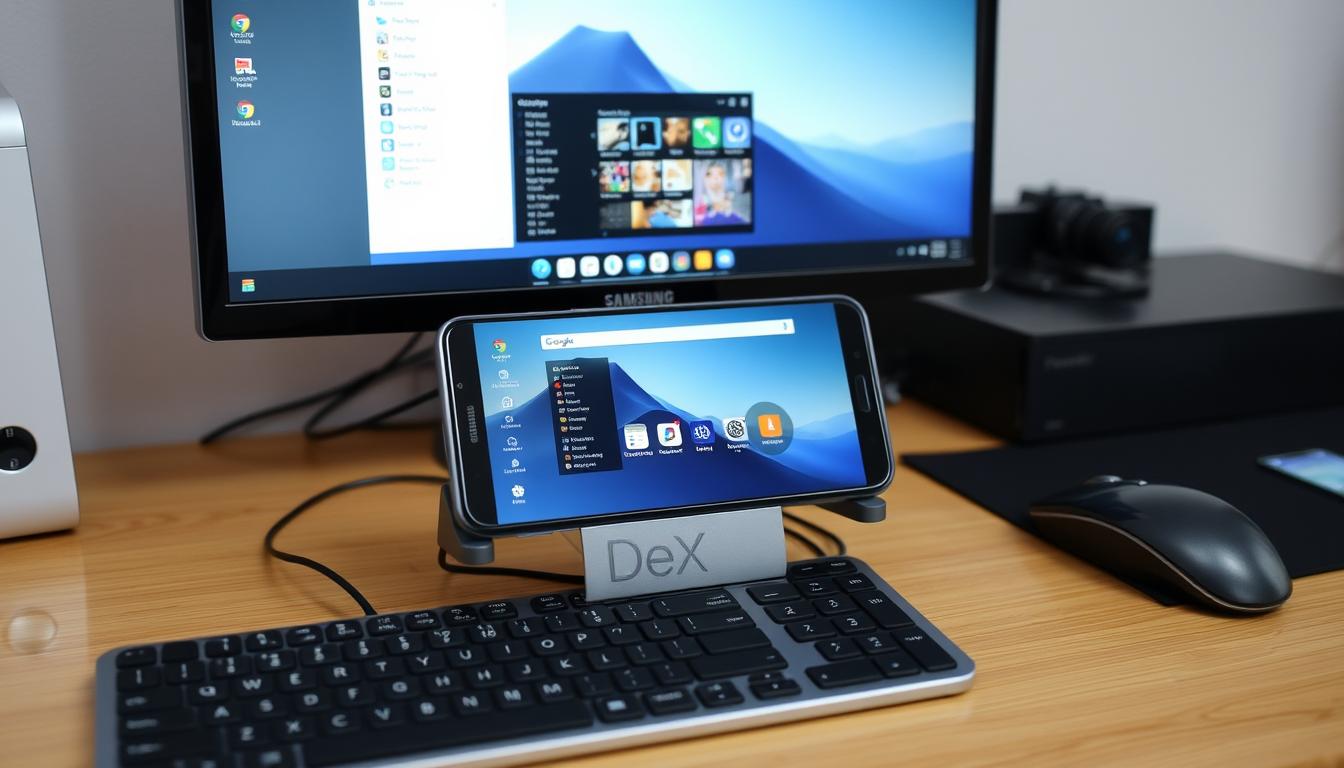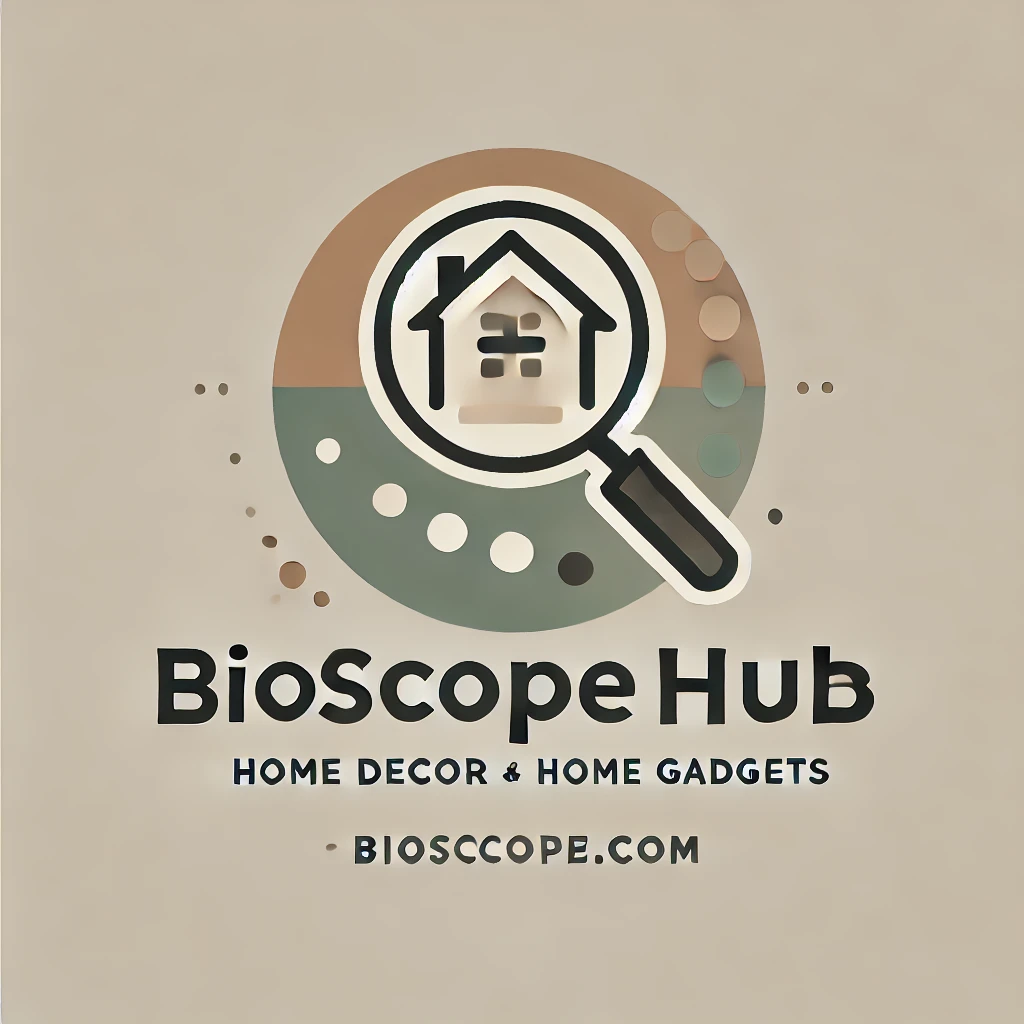Imagine being in a situation where your laptop has run out of battery or your PC hard disk has failed, and you desperately need to access a computer. In such a scenario, having a smartphone that can transform into a fully functional desktop can be a lifesaver.
Android is now building this capability directly into its operating system, allowing users to experience a desktop mode on their phone. This innovative feature is a significant step forward, making it possible to use your device as a replacement for a traditional computer.

We’re exploring how this new mode works and what it means for users who need a more versatile experience. With this development, the lines between smartphones and computers are becoming increasingly blurred.
Key Takeaways
- Android’s latest feature allows transforming a smartphone into a desktop computing environment.
- This capability is being built directly into the Android operating system.
- The feature has the potential to eliminate the need for a separate computer for many tasks.
- We’ll cover the hardware requirements and necessary accessories for this feature.
- Practical applications and setup procedures will also be discussed.
The Evolution of Smartphone Computing
Smartphones have undergone a remarkable transformation, evolving into devices that can potentially replace traditional desktop computers. This shift is driven by advancements in smartphone technology, making them powerful enough to handle tasks previously reserved for desktops.
How Smartphones Have Become Powerful Enough for Desktop Use
The processing power, memory, and storage capacity of modern smartphones have increased significantly, enabling them to handle demanding tasks. Wireless HDMI solutions like Chromecast have also made it possible to connect smartphones to larger displays, enhancing their desktop-like experience. This means that users can now access a familiar desktop interface on their TV, making it easier to multitask and be productive.
Why You Might Want to Use Your Phone as a Desktop
Using your phone as a desktop offers several benefits. For instance, having a single device that serves multiple purposes simplifies your digital life. You can enjoy unprecedented flexibility as a traveler or remote worker, transforming your pocket-sized device into a full workstation. Additionally, this approach can be a valuable backup option in emergency situations and contribute to reducing electronic waste.
- Simplifying your digital life by having a single device for multiple purposes
- Transforming your phone into a full workstation for enhanced productivity
- Serving as a backup option when your primary computer is unavailable
- Reducing electronic waste by minimizing the number of devices you own
What You’ll Need to Turn Your Phone Into a Desktop

To transform your phone into a desktop, you’ll need a few essential components. The right hardware can make a significant difference in your overall experience.
The process involves connecting your phone to external devices to mimic a desktop setup.
Essential Hardware Components
The first thing you’ll need is a USB-C to HDMI adapter to connect your phone to an external display. Many modern smartphones use USB-C, making this adapter a crucial component for desktop mode.
Additionally, a bluetooth keyboard and mouse are necessary for a more traditional desktop experience. These devices allow for more efficient multitasking and productivity.
Optional Accessories That Enhance the Experience
While not essential, several accessories can significantly enhance your phone-to-desktop experience. For instance, external storage options like USB drives or portable SSDs can expand your available space for documents and media.
Specialized stands or mounts can position your phone at an optimal viewing angle. Wireless charging pads with built-in cooling can help maintain performance during extended desktop sessions.
Samsung DeX: The Gold Standard for Phone-to-Desktop Conversion

Samsung DeX is setting a new standard for phone-to-desktop conversion, offering a seamless user experience. It transforms your Samsung smartphone into a desktop-like environment, complete with a taskbar and windowed apps.
Compatible Samsung Devices
Several Samsung devices support DeX, including the Galaxy S series, Note series, and some A series models. To check if your device is compatible, you can visit Samsung’s official website.
Setting Up Samsung DeX Step by Step
To set up DeX, first ensure your device is compatible. Then, connect your phone to a monitor using a USB-C to HDMI adapter or through a DeX-compatible docking station. Next, navigate to your phone’s settings, enable DeX, and follow the on-screen instructions to complete the setup.
The desktop mode allows for a more traditional computing experience, with window management capabilities similar to those found on Windows or macOS.
Navigating the DeX Interface
The DeX interface is designed to be intuitive. At the bottom, there’s a taskbar that provides quick access to your apps, settings, and system functions. You can open apps in windows, resize them, and manage multiple windows simultaneously, creating a true multitasking environment.
With DeX, you can enjoy a desktop mode that closely mimics the experience of using a traditional desktop computer, making it easier to get work done on your Samsung device.
Alternative Methods to Turn Your Phone Into a Desktop
If Samsung DeX isn’t the right fit, several alternative methods can transform your Android phone into a functional desktop.
Using Android’s Hidden Desktop Mode with Taskbar App
Android offers a hidden desktop mode that can be accessed using the Taskbar app, providing a desktop-like experience on your phone.
This method involves downloading and installing the Taskbar app, which then allows you to view your apps in a windowed mode, similar to a desktop.
To use this feature, you’ll need to enable it in the app’s settings and potentially grant some permissions.
Casting to External Displays with Chromecast
Another alternative is to cast your Android phone’s screen to an external display using Chromecast or other mirroring technologies.

This method is straightforward and requires minimal additional hardware, making it highly accessible.
By pairing a Bluetooth keyboard and mouse with this setup, you can create a functional workstation for basic productivity tasks.
Optimizing Your Phone-to-Desktop Experience
To get the most out of your phone’s desktop capabilities, it’s essential to optimize your experience. When the desktop view appears, you’ll be able to control it using your mouse and keyboard. You can still use your phone as normal too, if you need to. Apps launch in their own separate windows, providing a more traditional desktop experience.

Best Apps for Desktop-Style Productivity
To enhance productivity, certain apps are more suitable for desktop-style use. Here are some of the best:
- Microsoft Office for editing documents
- Google Drive for cloud storage
- Task management tools like Trello
These apps are designed to work efficiently with a mouse and keyboard, making your phone-to-desktop experience more intuitive.
Keyboard and Mouse Shortcuts You Should Know
Learning keyboard and mouse shortcuts can significantly enhance your productivity. Here are some essential shortcuts:
- Using Ctrl+C and Ctrl+V for copy and paste
- Navigating with Alt+Tab between open apps
- Customizing shortcuts where supported to improve your workflow
- Utilizing touchpad gestures on compatible keyboard cases for laptop-like navigation
By mastering these shortcuts and understanding how to use your mouse keyboard effectively, you can improve your overall input experience.
Overcoming Common Limitations When Using Your Phone as a Desktop
As exciting as it is to use your phone as a desktop, there are some common issues you’ll need to overcome. While the idea of transforming your device into a PC-like experience is appealing, it’s not without its challenges.
Dealing with App Compatibility Issues
One of the primary concerns is app compatibility. Not all apps are optimized for desktop use, which can lead to a less-than-ideal user experience. To mitigate this, we recommend exploring alternative apps that are designed with desktop functionality in mind. For instance, some productivity apps offer more features when used in a desktop environment.

Managing Performance and Battery Life
Managing your phone’s performance and battery life is crucial when using it as a desktop. To maximize performance, consider closing unnecessary background processes and adjusting your device’s settings to optimize hardware usage. For battery life, practical tips include reducing screen brightness and turning off unnecessary features.
| Issue | Solution |
|---|---|
| App Compatibility | Use alternative apps designed for desktop functionality |
| Performance | Close unnecessary background processes, adjust device settings |
| Battery Life | Reduce screen brightness, turn off unnecessary features |
Conclusion: Is Your Phone Ready to Replace Your Computer?
With advancements in mobile technology, the possibility of replacing a traditional computer with a smartphone is becoming increasingly feasible. For people who do general productivity work, browse the web, or consume media, the difference between a high-end laptop and a capable phone is minimal.
We assess whether your specific needs and workflow are compatible with using your phone as your primary computing device. The future of desktop mode functionality looks promising as Android continues to develop its native desktop mode capabilities. For many users, the convenience of a single device that adapts to different contexts outweighs the remaining limitations of mobile desktop experiences.
As mobile hardware and software continue to evolve, the gap between phone-as-desktop and traditional computing experience will likely continue to narrow. The environmental and financial benefits of reducing the number of devices you own make this approach worth considering.
FAQ
What is Samsung DeX, and how does it work?
Samsung DeX is a feature that allows us to turn our Samsung smartphone into a desktop experience by connecting it to an external display, keyboard, and mouse. It provides a PC-like interface, enabling us to use our device like a computer.
Which Samsung devices are compatible with DeX?
We can check the list of compatible Samsung devices on the official Samsung website. Generally, most recent Samsung phones and tablets support DeX.
Can I use DeX without a cable?
Yes, we can use DeX wirelessly by connecting our Samsung phone to a compatible external display using Wi-Fi. However, a cable connection is also supported for a more stable experience.
Are there alternative methods to turn our Android phone into a desktop?
Yes, we can use Android’s hidden desktop mode with the Taskbar app or cast our screen to an external display using Chromecast or other casting devices.
What are the best apps for desktop-style productivity on Android?
We can use various productivity apps that are optimized for desktop mode, such as Microsoft Office, Google Docs, and other task management tools that support keyboard and mouse input.
How can we optimize our phone-to-desktop experience?
To optimize our experience, we can use a Bluetooth keyboard and mouse, adjust the display settings, and choose the right apps that support desktop mode.
What are the common limitations when using our phone as a desktop?
Common limitations include app compatibility issues, performance, and battery life. We can manage these by closing unnecessary apps, adjusting screen brightness, and using a power bank.
